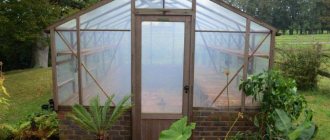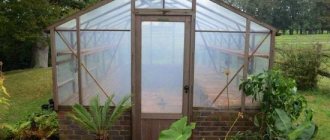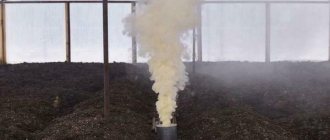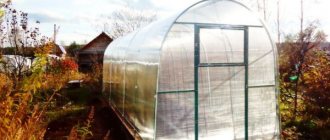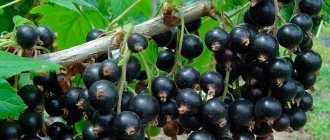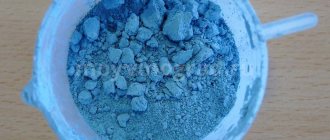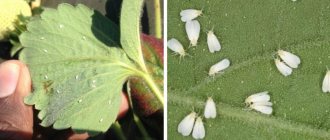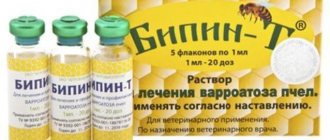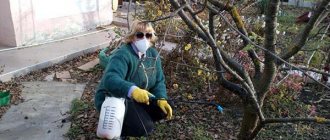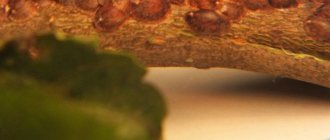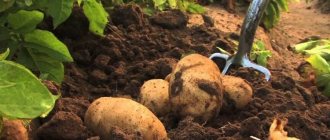After harvesting vegetables, it is necessary to include sanitary treatment of the polycarbonate greenhouse in the autumn in the schedule of activities. During the last rotation, harmful bacteria, viruses, harmful insects and fungi, which can safely overwinter under a layer of snow and plant debris, could accumulate and multiply in the cultivation room. With the onset of spring, they will come out of their hiding places and begin to attack cultivated plants.
In order to prevent the mass reproduction of pests and pathogenic microorganisms, in the autumn a set of measures is carried out to clean and disinfect protected ground structures. Based on the advice and recommendations of experienced gardeners, we have put together all the information on how such work should be carried out.
When to treat a greenhouse in the fall
The process of preparing a greenhouse structure for the next season is quite labor-intensive and it is better to carry it out in stages. If, due to lack of time or for other reasons, you postpone these activities until spring, it will be wrong. Various parts of the supporting frame and plant debris left on the soil may contain larvae of parasitic insects and pathogens of such dangerous diseases as:
- scab;
- olive spot;
- late blight;
- peronosporosis;
- powdery mildew;
- anthracnose
If you ignore the treatment of the greenhouse in the fall, all these pathogens will attack the tomato or cucumber seedlings in the spring, causing big problems for the owners of the plots.
It is especially important to carry out treatment against pests and diseases in the fall if you do not plan to replace the soil in the greenhouse.
In this regard, it becomes clear when it is better to treat the greenhouse - in autumn or spring. To better preserve the future harvest and reduce the risk of plants being damaged by dangerous diseases, this work should be done in the fall, after the next harvest.
How to treat a greenhouse in the fall after harvesting? Preventive work is carried out according to the following algorithm:
- collection and removal of plant residues from the greenhouse;
- cleaning and washing the roof and walls;
- soil treatment and preparation activities;
- disinfection of cultivation premises;
- minor repairs to the greenhouse.
When planning work, it is not necessary to adhere to any exact deadlines or dates according to the Lunar calendar. They depend on the crop that was last grown in the greenhouse and the prevailing weather conditions. But there is little point in postponing sanitary treatment until later if the greenhouse is empty and nothing is grown there anymore.
To carry out autumn preventive work in the greenhouse, you need to choose a fine day, when the air temperature varies within 10-15 degrees above zero.
Stage #1 – freeing the area from fixtures
Everything that could be subject to thorough processing will need to be removed from the room. Portable trellises, inventory buckets, racks, vessels for transplanting seedlings. If wooden supports or analogs offered by most manufacturers of industrial greenhouses or polycarbonate were installed to support the roof in case of heavy snowfall, they should be dismantled.
With racks, trellises, racks, and supports removed from the greenhouse, we proceed as follows:
- Wooden support structures should be carefully inspected. Identified rotten and fungus-affected parts must be mercilessly replaced. After repair, wood fixtures should be whitewashed with settled slaked lime with the addition of paint glue.
- Metal structures need to be studied with equal care. Detected pockets of rust must be treated with a rust remover. In the absence of a factory-made product, we remove rust with half a potato. It contains enough oxalic acid to cope with minor rust crust. Baking soda or a mixture of vinegar and lemon juice will work. But the result of the latter option will be visible only a couple of hours after application. Have you removed the rust? Primer was applied and paint was applied.
After removing the various fixtures, it's time to examine the condition of the metal supports to which the polycarbonate sheets are attached. Corroded areas are also treated and painted. It is clear that undamaged devices do not need to be repaired or restored.
While there are no plants in the greenhouse, an inspection of the stove and plumbing equipment, if any, should be carried out. The potbelly stove is taken outside, where its condition is thoroughly examined. If the first bend of the chimney burns out, install a metal sheet bent into a cylinder inside. It can be changed again before the next season without any problems. Happy owners of polycarbonate buildings with a heating system need to repaint the pipes with aluminum paint diluted with a solvent or acetone. Drying oils should be added to the coloring composition to optimize adhesion. Heating equipment should not be painted with oils: this will impair heat transfer.
What pathogenic organisms overwinter in a greenhouse?
When planning autumn events, it is important to understand exactly what pests and pathogens of dangerous diseases remain in the greenhouse for the winter and what conditions they need for this.
Aphid
These insects drink the juice of cultivated plants. In the greenhouse they multiply quickly, parasitizing young shoots. During their life, insects secrete a sweet, sticky liquid on which harmful fungi develop.
During the winter, aphids lay eggs on plant debris. With the onset of positive spring temperatures, the eggs hatch into larvae, which then turn into adults. Aphids can be hidden in their nests by ants, who feed on its sweet secretions, using it as a milk cow.
When planning measures to combat aphids, it is necessary to simultaneously expel ants from the greenhouse.
Whitefly
It has a size comparable to an aphid, but can fly. White insects settle in large numbers on young plants and drink their juice. When overwintering in a greenhouse, the insect can withstand temperatures down to minus 5 degrees.
- In regions with frosty winters, you can destroy wintering individuals by freezing, creating a temperature in the greenhouse below 5 degrees below zero.
- In southern areas you will have to use a chemical agent.
Spider mite
The insect is small in size, but capable of destroying plants in a short period of time. It feeds on plant sap, leaving small dots on the underside of the leaf. It leaves a thin web where the leaves are attached.
The adult insect overwinters in various crevices or in debris. Folk remedies and acaricides are used against ticks.
Slugs
They have a gnawing type mouthparts. During the day, slugs sit in secluded places, and at night they go out hunting, gnawing on young shoots, leaves and fruits.
Slug larvae remain in the soil layer and can be destroyed with hot water or chemicals.
Nematode
The pest belongs to the class of roundworms. Small, barely noticeable worms parasitize the roots and stems of vegetable plants, causing great damage to the crop.
It's difficult to fight her. For wintering, roundworms are located in the thickness of the earth, at a depth of 20 cm, or remain in galls - thickenings on the root system.
Fungal infection
These include:
- late blight,
- cladosporiosis,
- fusarium,
- powdery mildew,
- numerous types of rot.
The disease occurs under poor growing conditions and quickly spreads on plants, taking away a significant part of the crop. It is not easy to fight it, since the fungi have become resistant to chemicals.
They spend the winter in the greenhouse on equipment, on the soil and walls of the room. Drugs that belong to the group of fungicides are effective in the fight.
Viral and bacterial infection
They are brought into the greenhouse with seeds, soil and insects. Therefore, preventive measures in this case include:
- cleaning of plant fragments;
- application of insecticides;
- use of drugs against bacteria.
Features when cleaning: what to pay attention to
- When cleaning the greenhouse in the fall, you need to pay attention to the tops. If it is affected by larvae and other pests, then it is better to burn it. If the plants are healthy, they can be placed on the compost heap.
- When removing supports and twine residues, they may also harbor bacteria. Therefore, they should be burned or placed in a trash bin. If reusable metal supports are used in the greenhouse, they are processed together with other frame elements.
- Close attention should be paid to the gap between the frames, as well as to places under stale stones and other hard and flat materials. As a rule, many pests accumulate under them: mole cricket larvae, all kinds of worms and wireworm embryos. They must be collected manually in the fall, since they are not afraid of frost under such protection, and they can be preserved.
- If the greenhouse is covered with film, it is recommended to remove it before the onset of winter, when the temperature is still above zero. This coating also needs to be cleaned of dirt, allowed to dry, folded and stored in a dry place with a positive temperature (for example, in a basement).
- 5. The metal structure also needs to be put in order. First, carefully inspect from all sides. If traces of corrosion are found, they must be thoroughly cleaned with fine sandpaper. Then coat it with a primer, which will prevent the spread of rust, and paint it with a paint of a suitable color.
Attention!
It is safer to burn crop residues (roots, tops, mulch) and other debris rather than leaving them in an empty place or burying them in the ground.
Treatment methods for diseases and pests
All microflora inhabiting the soil are divided into harmful and beneficial. It is important to select drugs that selectively kill only organisms harmful to plants.
Effective methods for treating a polycarbonate greenhouse in the fall
Purchased preparations for treating greenhouses
The list of purchased chemicals is quite large and the bulk of them belong to broad-spectrum products.
However, it is recommended to purchase narrowly targeted preparations so that the beneficial soil microflora does not suffer.
How to treat a polycarbonate greenhouse in the fall? The most widely used drugs are:
Fufanon
The product is effectively used in the fight against aphids, thrips, whiteflies and spider mites.
To prepare the working solution, dissolve 10 ml of the drug in 10 liters of water and, using a sprayer, apply the insecticide solution to the expected wintering sites of pests:
- garden bed fencing elements;
- gaps in frame joints;
- soil surface.
Storm
This product is widely used to kill slugs and snails. To use it, you do not need to dissolve it in water, but simply scatter it after harvesting the previous crop onto the soil surface at the rate of 30 g per 10 m2.
During their movements, slugs will come into contact with the product, after which they will experience complete dehydration of the body, resulting in death. With the onset of cold weather, the effectiveness of the drug drops sharply.
Muratsid
This method is used to kill ants. To prepare the working solution, 1 ampoule of the product is dissolved in a bucket of water. Then a liter of solution is poured into the discovered ant nests.
When trying to leave the nest, the ants die. For greater efficiency, you can spill the solution along the ant paths.
Thunder
Used to kill mole crickets and ants. If there are mole cricket holes, pour 1 tsp near them. product, slightly moisturizing it. The mole cricket will definitely try it and soon die. To get rid of ants, dry powder is poured directly onto the anthill.
Marshal
Used by vegetable growers against aphids, spider mites, root-knot nematodes and thrips. Before use, 1 ampoule of the drug, with a capacity of 7 ml, is dissolved in 10 liters of water and the solution is spilled on the soil.
One bucket is enough to treat 10 m2 of area.
Only 1 treatment is allowed per season. The drug is very poisonous and dangerous for humans and warm-blooded animals.
Fitosporin
The product belongs to a group of biological substances intended for the prevention and treatment of fungal diseases. Before use, 5 g of the product is dissolved in 10 liters of water and the resulting solution is irrigated on the soil surface, ceiling and walls of the greenhouse.
When the temperature drops to +10 degrees, treatment with this drug is stopped, since its beneficial bacteria lose activity.
Copper sulfate
This drug is used for comprehensive disinfection of the greenhouse. To use, dilute 1 tbsp. l. vitriol in a bucket of water. The prepared solution is used to irrigate the soil and walls of the greenhouses abundantly.
When treating greenhouse premises with copper sulfate, you must strictly maintain the dose and follow safety precautions.
Methods for controlling nematodes
The nematode is one of the most dangerous pests of greenhouse crops. Appearing on the roots of cucumbers or tomatoes, it forms peculiar growths - galls, which clog the sap-conducting tissues of the root.
These roundworms can reduce crop yield by 50% or even more.
So how can you disinfect a greenhouse from nematodes without replacing the soil? There are such ways to resist this pest:
- Compliance with cultural circulation. It is important to avoid monoculture in the greenhouse. Those vegetable growers who plant the same plants in the same place year after year are greatly mistaken. Ideally, planting should be planned so that the crop returns to its original place no earlier than after 3 years. This is difficult to achieve in a greenhouse, so other control methods are usually used.
- Replacement of soil. With this method, it is necessary to replace all the soil in the greenhouse to a depth of 25 cm or more. But, since this work is very labor-intensive, there are few people willing to do it.
- Soil treatment with hot water or steam. To do this, you need to heat the water to 60 degrees and pour it into the soil to a depth of 20 cm. If you have a steam generator, then hot steam is used instead of water.
- Adding fertilizers and sugar to the soil. Thanks to this method, saprophytic fungi appear in the soil and begin to multiply intensively, which attract the natural enemies of the nematode.
- Chemicals. In industrial greenhouses, systemic nematicides are used against nematodes. They are highly toxic to humans and warm-blooded animals and, along with nematodes, kill beneficial soil microflora. Summer residents use such drugs rarely and with great caution.
- Plants are nematode antagonists. This biological method can be adopted by any summer resident, since it is not very complicated. In addition to the nematode, it affects wireworms and mole crickets. The essence of the method is to plant the following nematode-inhibiting plants immediately after harvesting vegetables:
- marigold;
- calendula;
- leaf mustard;
- oilseed radish;
- watercress.
Green manure – mustard
Use of biologically active drugs
The method of treating a polycarbonate greenhouse in the fall is an alternative to the use of chemicals. It is good for those people who want to protect themselves as much as possible from the harmful effects of chemicals.
The idea is to create favorable conditions in the soil for the development of beneficial microflora. As a result of the work of beneficial soil microorganisms, the activity of pests and infectious agents is suppressed.
For this purpose, the following biologically active agents are added to the soil:
- "Phoenix";
- “Baikal EM-1”;
- “Fitop-Flora – S”;
- "Shine".
These products are dissolved in water at room temperature and then the solution is poured onto the soil. Considering that in cold weather the microorganisms of the drugs do not show activity, soil treatment is carried out at a temperature of +15 degrees and above.
The optimal time to use bioactive agents is immediately after harvest.
Once in the soil, the bacteria begin to multiply. It has been established that they use pathogenic microflora for nutrition, cleaning the soil without the use of chemicals. It is reasonable to use such preparations in combination with biological fungicides, for example, phytosporin.
Fitosporin should be diluted according to the instructions and sprayed onto the soil, frame and walls of the greenhouse. Beneficial microflora will not be harmed by the drug, so it is used for prevention, without waiting for signs of a particular disease to appear.
Efficacy has been established against diseases such as:
- root and stem rot;
- cladosporiosis;
- powdery mildew;
- late blight;
- peronosporosis.
About the use of the drug Trichoplant
Treatment with chemicals against harmful insects
This method of disinfecting a greenhouse is resorted to if, during the next greenhouse rotation, tomatoes and cucumbers suffered from an invasion of pests, and the measures taken did not give the expected result.
When using this method, one should not forget that insecticides rarely act selectively. They kill many beneficial insects. If you strictly follow the instructions when working with such drugs, the amount of associated harm from such processing will decrease.
Complex disinfection of greenhouses
In the case where pests have multiplied in the greenhouse or the cultivation room is heavily infected with a fungal, viral or bacterial infection, there is no time for selectively targeted treatment. It is necessary to use complex preparations with a wide spectrum of action and sacrifice beneficial soil microflora.
Such potent agents include:
- “Bleached lime”;
- “Copper sulfate”;
- “Bordeaux liquid”;
- “Farmayod”;
- "Formalin".
Treatment of polycarbonate greenhouses in the fall with these products is carried out after the removal of plant residues and washing.
Let's learn more about these products and how to dilute them before use.
Copper sulfate
The drug is presented as a blue-blue powder. To prepare the working solution, you need to dissolve 1 tbsp. l. products in 10 liters of water. The resulting solution is poured onto the soil and the walls of the greenhouse structure are sprayed.
To a greater extent, it affects various fungi, and also has a detrimental effect on some bacteria and individual insects.
Farmayod
Essentially, it is an aqueous solution of iodine. To use it, it must be diluted in warm water until a light brown color is obtained. Use the prepared solution to treat the soil and greenhouse structures to remove harmful bacteria.
Instead of Farmayod, you can use potassium permanganate. The result will be similar.
Bleaching powder
Sold in hardware stores in the form of a white powder. It is used in dry form (by spraying onto the soil) against harmful insects and pathogenic bacteria. It has also been established that it gives results in the fight against spider mites. To do this, you need to sprinkle lime not only on the soil, but also on the lower part of the greenhouse walls, after moistening them.
Bordeaux mixture
The preparation consists of equal parts of copper sulfate and slaked lime. Kills fungal and bacterial pathogens and some insects well. The effect is achieved only with proper preparation of the drug.
Preparation is carried out according to the following algorithm:
- take 100 g of copper sulfate and dilute it in 1 liter of hot water;
- The composition is stirred until all the crystals are dissolved, and then the volume is brought to 5 liters with cold water;
- at the same time, in another container, dilute 100 g of unslaked lime in 1 liter of water and wait until it is quenched;
- after this, the volume is also adjusted to 5 l;
- Cool both solutions to 24 degrees and combine them, stirring vigorously;
- when mixing, copper sulfate is poured into the lime solution, resulting in a blue Bordeaux mixture;
On the day of preparation, the resulting product is sprayed onto the greenhouse structures and the soil in it.
Formalin
This is a very potent remedy and is used in exceptional cases when the infection in the greenhouse is very large. The drug kills all living things, including beneficial microflora. Since it is very poisonous, work must be carried out in personal protective equipment and a gas mask.
Treatment is carried out by spraying at the rate of 20 ml of 40% solution per 1 cubic meter of greenhouse. Additionally, you can spray the soil with the preparation for greater effect. After treatment, close the greenhouse for 24 hours and then ventilate.
Freezing out the greenhouse
This is the most environmentally friendly way to combat harmful microflora. To do this, you need to leave the windows and doors of the greenhouse open for the winter.
The freezing method is used to get rid of whiteflies and a number of other pests that remain for the winter.
Sulfur treatment
According to many gardeners, treating a polycarbonate greenhouse with gray in the fall is one of the most effective ways to disinfect greenhouses. The gas released when sulfur burns - sulfuric anhydride - kills all living organisms in a confined space.
The gas will penetrate into all hard-to-reach cracks and even into the soil to a depth of 10 cm, destroying harmful insects and rodents hiding there.
For greater efficiency, sulfur is used together with potassium permanganate according to the following algorithm:
- Fires are lit along the central path along the entire length of the greenhouse, every 6-8 meters.
- Then metal baking sheets with a mixture of sulfur and potassium permanganate are laid out on burning coals. The amount of ingredients is calculated so that per 100 m2 of area there are 2 kg of sulfur and 40 g of potassium permanganate.
- For safety reasons, given the very high toxicity of sulfuric anhydride, the placement of baking sheets with sulfur is carried out from the farthest end of the greenhouse towards the exit from it.
- Under the influence of high temperature, sulfur ignites with abundant release of smoke and sulfuric anhydride. After making sure that the sulfur on all baking sheets has ignited, the doors of the cultivation room are tightly closed and exposed to at least 24 hours.
- At the end of the exposure, the greenhouse will need to be thoroughly ventilated for several days. To do this, open all the doors and windows, creating drafts.
Sulfuric anhydride is very harmful to the human body. Therefore, disinfection work must be carried out in personal protective equipment, and a gas mask or respirator with a gas cartridge should be worn on the face.
Video: features of greenhouse sulfur treatment
Visual videos about the rules and mistakes of using sulfur to treat a greenhouse from the channel “Garden with your own hands.”
Video lesson on greenhouse processing from Yulia Minyaeva
Processing a polycarbonate greenhouse in the fall from the author of the channel “Whether in the garden or in the vegetable garden,” as well as preparing the greenhouse for winter.
Disinfection of a polycarbonate greenhouse in the fall. What to process
The disinfection of the greenhouse is completed in the fall by treatment with chemical or biological products.
Moreover, you should know that not everything that can be used to treat a greenhouse in the fall is suitable for spring treatment. In spring it is better to limit yourself to biological means. The most common methods for treating a greenhouse in the fall are:
- fumigation with a sulfur bomb;
- fumigation with cuttings sulfur;
- pollination with bleach;
- irrigation with copper sulfate.
ATTENTION! Fumigation of a greenhouse with sulfur is unacceptable in cases where its frame is made of galvanized steel. Sulfur dioxide released during combustion will accelerate metal corrosion. These products can be used to treat painted and wooden frames of greenhouses.
Fumigation with a sulfur bomb
IMPORTANT! Before processing a polycarbonate greenhouse, keep in mind that sulfur dioxide released when sulfur burns is harmful to the metal parts of the structure.
When using this method of disinfecting a greenhouse, you should use protective equipment: gloves, a gas mask (respirator) and goggles. After all, the gas released by sulfur is very toxic. All cracks in the building are sealed, transoms and doors are closed.
For 10 m 3 you will need 600 g. substances. The checkers are evenly placed around the entire perimeter of the building on metal sheets or stone stands and set on fire. The fire should be started from the side away from the entrance. The greenhouse must be left immediately to avoid poisoning.
Fumigation with cuttings sulfur
When fumigating with sulfur cuttings, you also need to use means of protection against the toxic effects of sulfur smoke. The greenhouse must be tightly closed to achieve the desired concentration of gas released.
To process 10 m 3 you will need 1 kg of cutting sulfur, several metal baking sheets, and the same number of basins or similar containers. The sulfur should be crushed and mixed with an equal amount of charcoal, placed on baking sheets, which are placed in basins and placed evenly over the entire area of the greenhouse. After igniting the substance, the greenhouse should be left.
It will be possible to open a structure treated with sulfur cuttings or sulfur bombs only after 5...7 days. It should be ventilated for another 2-3 weeks. At this time, no work can be carried out in the greenhouse. Treatment using fumigation helps to disinfect not only the structure itself, but also the greenhouse soil.
Bleach treatment
You can disinfect a greenhouse in the fall and spring using bleach. To prepare the solution you will need:
- 400 gr. bleach;
- 10 liters of water;
- Spray.
Bleach is added to the water, mixed thoroughly and left for four hours. The soil and the building itself are sprayed with the prepared solution. At the end of the treatment, the greenhouse is closed for 1-2 days, then thoroughly ventilated. The product must also be used to disinfect equipment.
Copper sulfate treatment
An excellent disinfectant for disinfecting a greenhouse in the fall or spring is a solution of copper sulfate. To prepare it you will need:
- If no disease outbreaks have been observed in the current season - 75 gr. copper sulfate, if any - 150 g;
- 10 liters of water;
- Spray.
Copper sulfate is dissolved in 10 liters of water. All parts of the building are treated with the resulting mixture using a spray bottle.
Features of greenhouse processing after tomatoes and cucumbers
Cleaning and disinfecting the greenhouse after harvesting tomatoes and cucumbers has some features that should be highlighted.
How to clean a greenhouse after tomatoes
If during the last season the tomatoes were not subjected to massive pest attacks and did not suffer from fungal diseases, you need to work according to a general plan, which includes the following work:
- collection and removal of plant fragments from the greenhouse;
- restoration of soil fertility;
- cleaning of greenhouse structures.
Below we will tell you how to treat a greenhouse in the fall after harvesting tomatoes.
Tops disposal
It is very important to collect all plant debris (tops, fruits, weeds) and in any case, regardless of the presence of symptoms of damage, burn it. Some pests and pathogens remain overwintering on the stems and leaves of plants, so they can be easily destroyed by burning.
Before burning, the tops are dried in the sun outside the greenhouse. Do not throw away the resulting ashes; they will be useful for fertilizing the soil.
The top layer of soil is dug up with a pitchfork and all the rhizomes are combed out of it, which are then also set on fire.
Improving soil fertility
Tomatoes remove a lot of nutrients from the soil during harvest, which must be restored. To do this, organic fertilizers or green manures are incorporated into the soil. As organic matter, you can add a mixture of:
- compost;
- fresh manure;
- peat;
- humus.
This organic mass is added in quantities of 5 to 12 kg per 1 m2, taking into account the degree of depletion of the soil.
After incorporating green manure or organic matter into the soil, the soil is watered with biological products:
- "Shine";
- "East";
- "Baikal".
Before use, prepare a working solution of these drugs by diluting 150 ml of the product in a bucket of water. Then the soil is irrigated with this solution at the rate of 4 liters per m2.
Cleaning and processing of the structure
The frame of the greenhouse, its walls and roof are washed with a strong soap solution, without using hard brushes and sponges, so as not to scratch the polycarbonate coating.
If the frame of the greenhouse is made of metal, then it should be wiped dry after washing. And the wooden frame is whitened with lime.
Disinfection after diseases and pests
If pests or diseases were noticed in the greenhouse during the last rotation, it is necessary to disinfect it. When choosing disinfectants for treating a polycarbonate greenhouse in the fall, take into account the material from which the frame is made.
- Metal carcass. Such material is disinfected with boiling water or 9% vinegar diluted with 20 parts of water.
- Frame made of PVC pipes. Treat with a solution of bleach (400 g of product per bucket of water). For processing, take the upper clarified layer of liquid. A vinegar solution used on a metal frame is also suitable for disinfecting such frames.
- Wooden frame. Wooden structures are treated with copper sulfate or Bordeaux mixture. The concentration of funds should be from 7 to 10%.
Sulfur fumigation is suitable for disinfecting any type of frame, which we described in detail in other sections of this article.
Before fumigating with sulfur, lubricate the metal frame and parts with grease. It will protect the metal from damage.
The polycarbonate covering of the greenhouse after tomatoes is disinfected with a solution of bleach or a strong solution of potassium permanganate.
Soil disinfection
This treatment with chemicals is carried out only in the fall, since when applied in the spring, toxic substances can accumulate in the fruits. If diseases have been noticed on tomatoes during their growth, then you need to spray the soil with one of the following preparations:
- 10% solution of copper sulfate;
- 10% solution of Bordeaux mixture;
- 2.5% solution of iron sulfate;
- “Fitosporin – M” (at temperatures above +10 degrees)
- “Trichodermin”;
- “Fitoverm”;
- “Gaupsin”;
- 10% bleach solution (if spider mites are present).
After cultivating tomatoes, it is recommended to remove a 15 cm layer of soil. This way, you will collect a lot of overwintering spores of fungi, bacteria and insect larvae.
If the tomatoes suffered from root-knot nematodes and blackleg during the growing process, then you need to treat the greenhouse with karbofos at the rate of 90 g per bucket of water. First, the soil is spilled with this mixture, and after it dries, digging is done.
One of the most dangerous diseases of tomatoes is late blight. If it is diagnosed, it will not be easy to remove it. In the fight they recommend:
- pour boiling water over the soil;
- cover with plastic wrap for 24 hours;
- then additionally shed the soil with copper sulfate;
- sprinkle lime on the soil surface;
- dig up the soil.
Treatment of a polycarbonate greenhouse in the fall after late blight:
Cleaning the greenhouse after cucumbers
The main sources of cucumber diseases in a greenhouse are seeds, soil, and structures. It will not be possible to achieve complete plant protection without preventive measures and the use of biological and chemical plant protection products.
Greenhouse treatment after harvest
Usually, growing cucumbers is accompanied by common diseases and pests. Among the diseases it should be noted:
- powdery mildew;
- root and stem rot;
- peronosporosis;
- ascochyta blight
If the causative agents of these diseases are not destroyed in the fall, then with the onset of spring they will attack crop plants with renewed vigor and begin to cause significant damage to them. Therefore, there is an urgent need for autumn disinfection.
Of the pests that cause the greatest harm to cucumbers:
- whitefly;
- thrips;
- aphid;
- spider mite;
- root-knot nematode.
In the greenhouse, after cucumbers, plant residues are also removed. However, even before removal, it is recommended to treat drying lashes with one of the following preparations:
- a mixture of drugs (Bayleton, Farmayod and Actellik);
- “Climate” checkers (1 checker per 20 m3);
- “Fas” checkers (1 checker per 15 m3).
The advice on processing semi-dry cucumber lashes, which still need to be thrown away, may seem strange and unreasonable.
However, it has been calculated that this will be cheaper than preserving this breeding ground for diseases and pests for next year, and then fighting them throughout the season.
After removing the treated cucumber vines, it is necessary to clear the greenhouse area of all weeds and plant fragments, and then treat the structures and polycarbonate coating with Farmayod solution, the preparation of which is diluted with 150 g of the product in a bucket of water.
Stage #3 – fight against dust and dirt
The “guarantee of health” in this case for the grown seedlings and plants is established in the tried and tested old-fashioned way - by banal washing.
You need to get rid of dust deposits and dirt:
- the frame, which must be carefully treated with a soapy solution, and then collected from it with a damp cloth what was applied. If pests bothered you last season, you need to add a remedy specifically for the detected pathogen or insect pest to the rinsing water;
- polycarbonate plates on both sides. They are washed only with a soft cloth or sponge with soapy water. The soap solution applied externally is washed off without any particular concerns with a stream from a hose or simply with copious amounts of water. It’s better not to play around with the hose inside. Soap is not a desirable component of fertile soil. It will not be difficult to wash off the solution from vertical surfaces. The inner surface of an arched or gable roof should be wiped with a damp cloth several times.
A soap solution containing approximately 3% alkali will have virtually no effect on the composition of the soil mixture. A solution with a high alkali content is extremely undesirable for soil.
